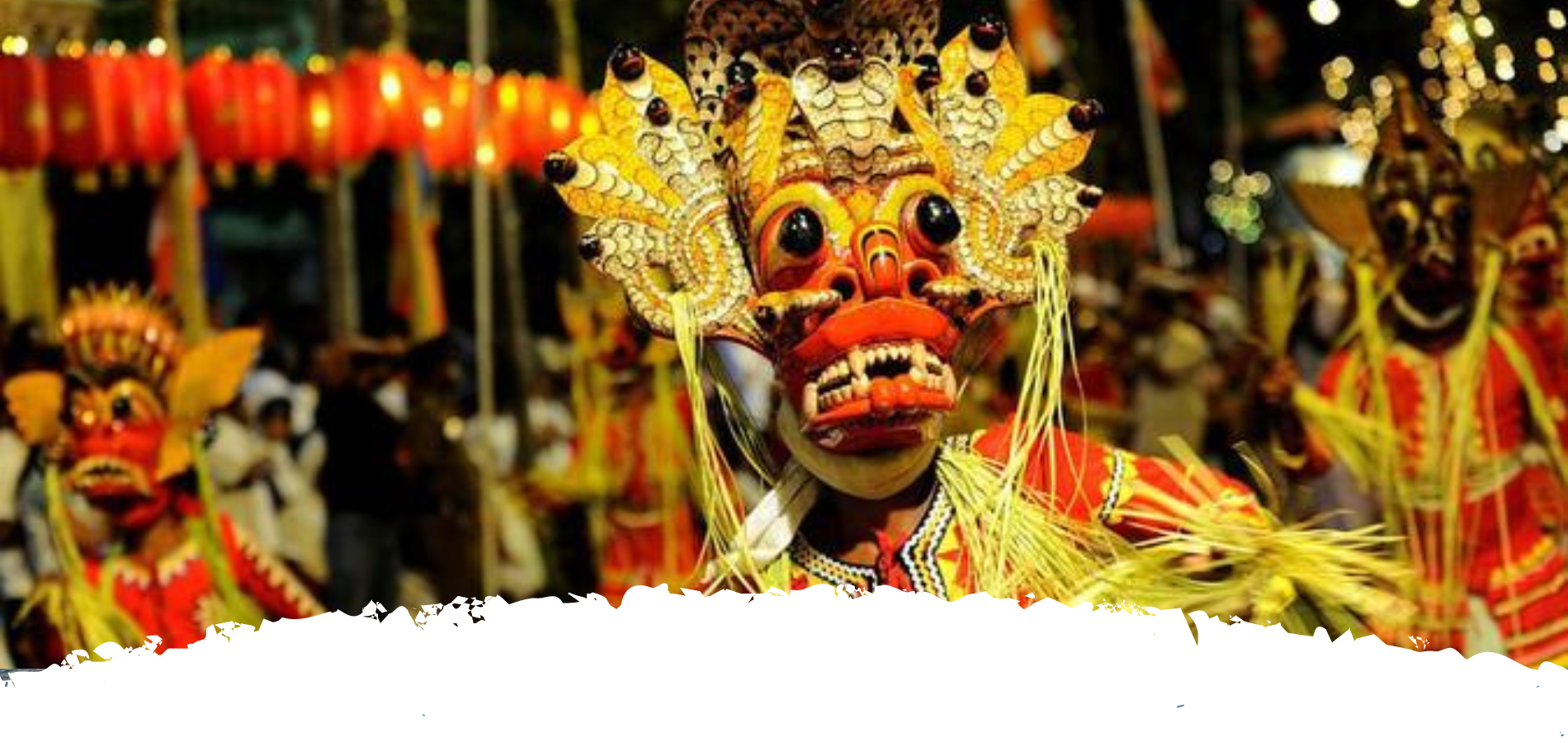Low Country Dance in Sri Lanka
Sri Lanka is a multicultural country that embrace of its nature as well as cultural heritage which enriches the richness of the country. There are three distinct traditions of dances in Sri Lanka that differ from each other based on costume, rhythm, and body movements. There are,
- Kandyan Dances for the Up Country
- Low Country Dances (Pahatha rata natum)
- Sabaragamuwa Dances
Low Country Dance
This dance of Sri Lanka dates back to the days of the Ruhunu Kingdom. This form of dance mostly performed in coastal areas such as Galle, Matara, Hambantota etc. The difference of this type of dance category is that the use of masks when performing. Low country is also popular as “Devil Dance” or Deity Dance” intending to appease the evil spirits from illness or sickness. Because of that this type of dance is highly ceremonial.
Costume and Instrument of Low Country Dance
The iconic and most important aspect of the costume of the low country dance is the use of a mask during the dance. Male in particular completely covers their face with masks. The dancers wear masks depicting many characters varied in forms of bird, demons, reptiles, etc. Women sometimes use a mask. The upper body and lower body are covered with long sleeves. The main instrument of the low country dance is the “yakberaya” which is a cylinder-shaped drum with a deep sound. The stomach lining of cattle has been used to build it.
Shanthikarma
Three main types of Shanthikarma can be found in the low country tradition of dance. (The Madu Shanthikarma, Bali Shanthikarma, and Thovil Shanthikarma)
- Madu Shanthikarma – Devol Madu Shanti Karma, which has been passed down from the past, is a Madu Shanti Karma. That is conducted on behalf of God to seek the welfare and prosperity of the people. The Madu Shanthikarma is performed to worship the Goddess Pattini, which is the most famous.
- Bali Shanthikarma – The Bali Shanthikarma are rituals that are performed to ward off the negative effects on people’s lives, caused by planetary movements
- Thovil Shanthikarma – The focus of this ritual is to expel the evil souls from a person or place and give freedom to them. This can be most commonly seen by the village areas in Sri Lanka.
Daha Ata Sanniya
Daha Ata Sanniya falls under the thovil shanthikarma category. Daha Ata Sanniya exorcist’s ritual performances and each Sanni depict an incurable disease or ailment. The different masks of the Daha Ata Sanniya are carved out of wood and depict the craftsman’s visual conception of each ailment. Daha Ata Sanniya” will be performed in main two sections where the first part will consist of seven Pails, while the second part will be performed as the 18 Sannis. The mask known as Daha Ata Sanniya is studded with 18 diseased faces.
Kolam
Kolam is a masked ritualistic dance. Kolam dancing was first performed at the request of King Maha Sammata to satisfy the Queen’s longing during pregnancy. There are some Kolam places such as famous for Mirissa udupila, Ambalangoda, Olaboduwa, Pokunuwita, and Kurudippita. The masks themselves are typically made from a light of balsa-style wood called “Kadura” that has been smoked dried and carved by hand. The west coast town of Ambalangoda is famous for making masks.
Kolam music consists of singing and playing instruments. The low country drum, also known as the Devol beraya, is commonly used instrument here. Other than the drum Thaalam pota and horanewa are also used. The low-country drum is used to play low-country dance rhythms. A kolam drama has verses linked with each character.
Rukada
Rukadas are also operated from above by means of strings. However, puppets had been used as entertainment during religious festivities as early as the 12th century. Rukada drama is performed by family groups in the southern coastal towns of Ambalangoda, Balapitiya, and Mirissa. The topics are chosen from folk tales, Buddhist stories, ancient literature, historical narratives, and trivia with humorous anecdotes.
Rukada Natya is a type of drama performed using string puppets, traditionally to provide light entertainment. Puppeteers make their own wooden puppets and prepare scripts with dialogues and songs. This traditional dance type is famous among tourists.


0 Comment